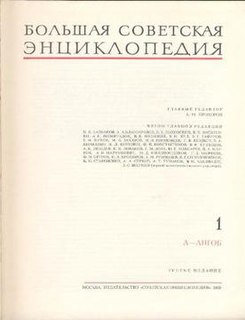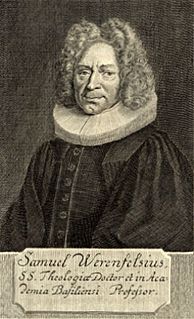
A camera obscura is a darkened room with a small hole or lens at one side through which an image is projected onto a wall or table opposite the hole.

Claude Servais Mathias Pouillet was a French physicist and a professor of physics at the Sorbonne and member of the French Academy of Sciences.

Richard Simon CO, was a French priest, a member of the Oratorians, who was an influential biblical critic, orientalist and controversialist.

Capillary action is the process of a liquid flowing in narrow spaces without the assistance of, or even in opposition to, external forces like gravity. The effect can be seen in the drawing up of liquids between the hairs of a paint-brush, in a thin tube, in porous materials such as paper and plaster, in some non-porous materials such as sand and liquefied carbon fiber, or in a biological cell. It occurs because of intermolecular forces between the liquid and surrounding solid surfaces. If the diameter of the tube is sufficiently small, then the combination of surface tension and adhesive forces between the liquid and container wall act to propel the liquid.
Johann Bernhard Bach was a German composer, and second cousin of J. S. Bach.

The Great Soviet Encyclopedia is one of the largest Russian-language encyclopedias, published in the Soviet Union from 1926 to 1990. After 2002, the encyclopedia's data was partially included into the later Bolshaya Rossiyskaya entsiklopediya in an updated and revised form. The GSE claimed to be "the first Marxist–Leninist general-purpose encyclopedia".

Johann Christian Poggendorff, was a German physicist born in Hamburg. By far the greater and more important part of his work related to electricity and magnetism. Poggendorff is known for his electrostatic motor which is analogous to Wilhelm Holtz's electrostatic machine. In 1841 he described the use of the potentiometer for measurement of electrical potentials without current draw.

Johann Andreas Wagner was a German palaeontologist, zoologist and archaeologist who wrote several important works on palaeontology.

Samuel Werenfels was a Swiss theologian. He was a major figure in the move towards a "reasonable orthodoxy" in Swiss Reformed theology.

Johann Christoph Sturm was a German philosopher, professor at University of Altdorf and founder of a short-lived scientific academy known as the Collegium Curiosum, based on the model of the Florentine Accademia del Cimento. He edited two volumes of the academy's proceedings under the title Collegium Experimentale.

Johann Dzierzon, or Jan Dzierżon or Dzierżoń, also John Dzierzon, was a Polish apiarist who discovered the phenomenon of parthenogenesis in bees.

Masaaki Suzuki is a Japanese organist, harpsichordist and conductor, and the founder and music director of the Bach Collegium Japan. With this ensemble he is recording the complete choral works of Johann Sebastian Bach for the Swedish label BIS Records, for which he is also recording Bach's concertos, orchestral suites, and solo works for harpsichord and organ. He is also an artist-in-residence at Yale University and the principal guest conductor of its Schola Cantorum, and has conducted orchestras and choruses around the world.

Johann Sebastian Bach was a German composer and musician of the late Baroque period. He is known for instrumental compositions such as the Cello Suites and Brandenburg Concertos; keyboard works such as the Goldberg Variations, The Well-Tempered Clavier and the Toccata and Fugue in D minor; and vocal music such as the St Matthew Passion and the Mass in B minor. Since the 19th-century Bach Revival, he has been generally regarded as one of the greatest composers in the history of Western music.
Daniel Christian Ludolph Lehmus was a German mathematician, who today is best remembered for the Steiner–Lehmus theorem, that was named after him.
Johann Baptiste Horvath was a Hungarian Jesuit Professor of Physics and Philosophy at the Catholic university for teaching theology and philosophy in Nagyszombat, Kingdom of Hungary. He is most noted for his authorship of various textbooks.
Julius Erici Micrander Uplandiensis was a Swedish professor, member of the Swedish Parliament, and vicar with the Church of Sweden.

Johann Chrysostom Magnenus was a physician and advocate of atomism.
Sir Robert Thomas, 2nd Baronet (c.1622-1685) was a Welsh politician who sat in the House of Commons of England from 1661 to 1681. He was knighted and succeeded as baronet in 1673 on the death of his father.
John Christopher Sturmius (1635–1703) was a 17th-century German mathematician.
Bach composed Wie schön leuchtet der Morgenstern, BWV 1, as chorale cantata for the Marian feast of the Annunciation, for a first performance in a church service in Leipzig on 25 March 1725. The cantata, for soprano, tenor and bass soloists, four-part choir and Baroque orchestra, takes around 25 minutes to perform.













